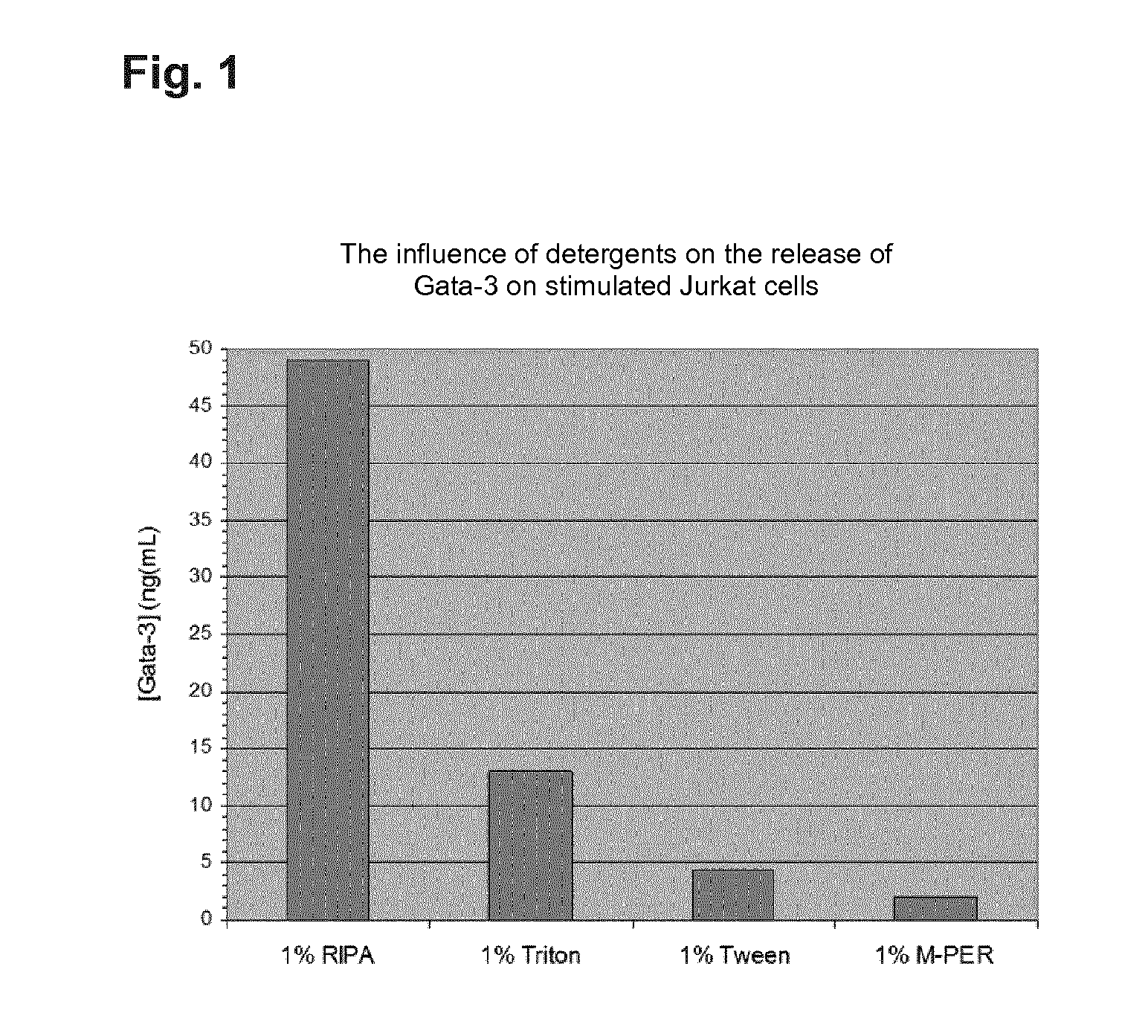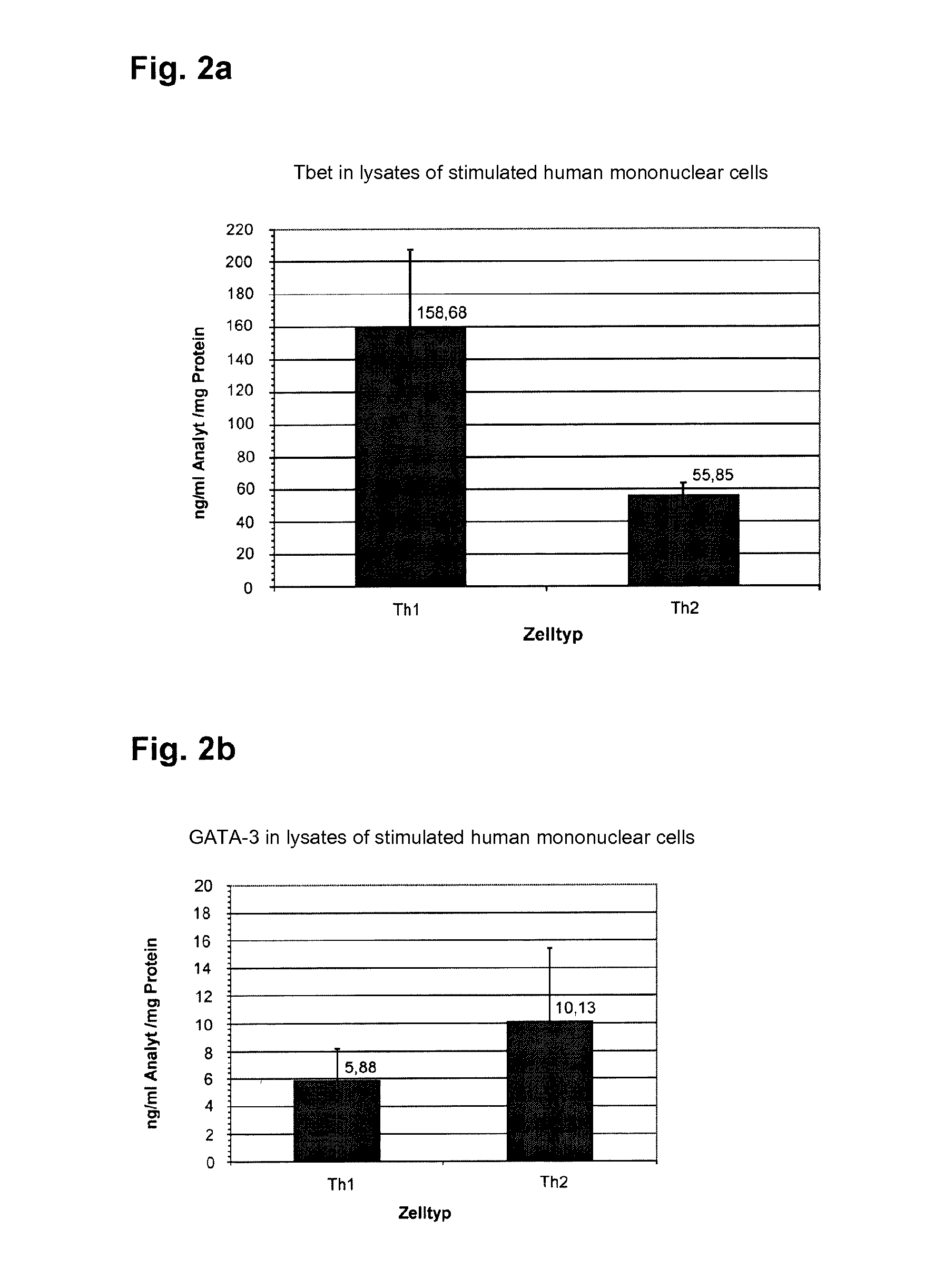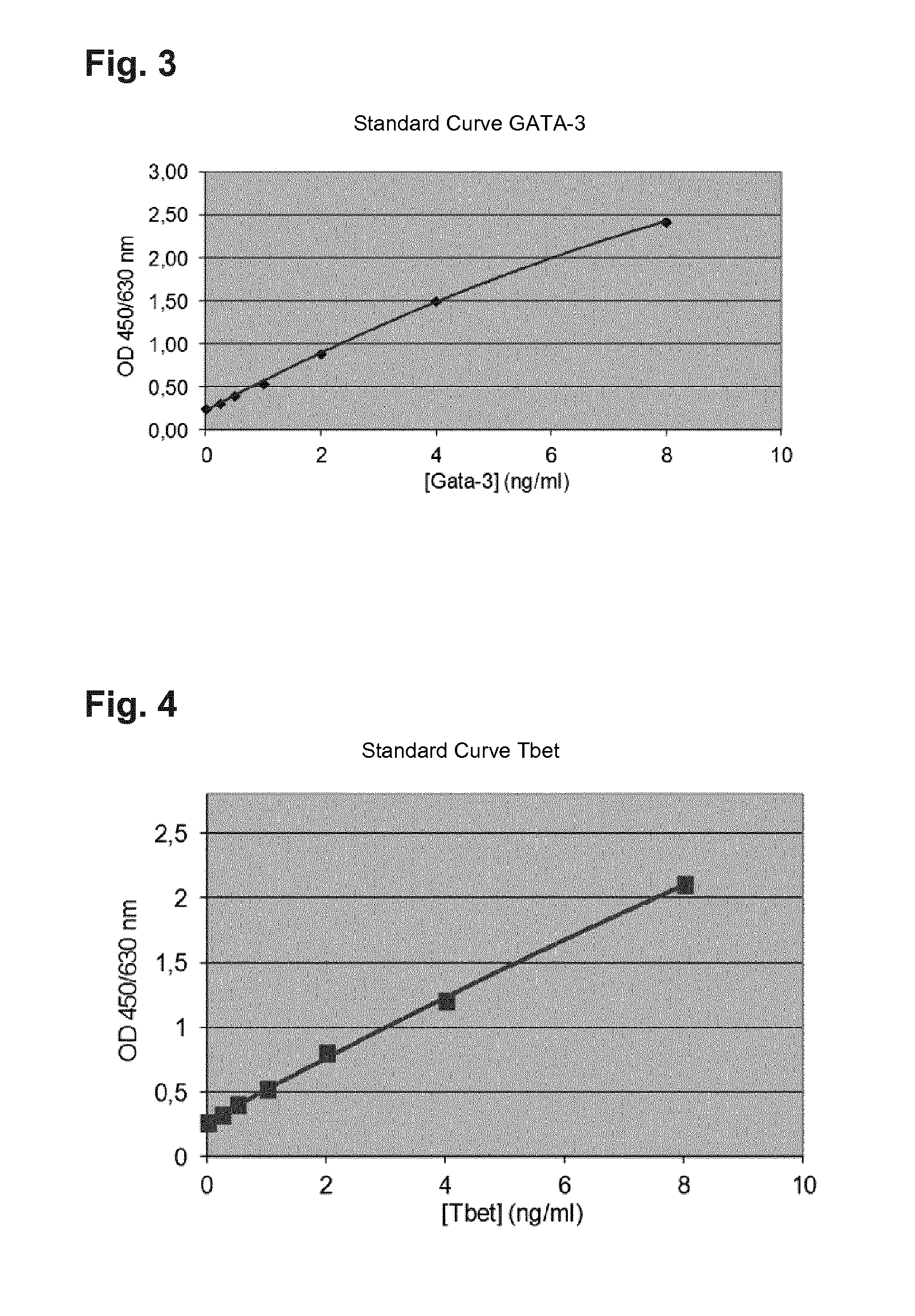Method for Diagnosing a Molecular Phenotype of a Patient Suffering From an Illness Accompanied by Chronic Inflammation
- Summary
- Abstract
- Description
- Claims
- Application Information
AI Technical Summary
Benefits of technology
Problems solved by technology
Method used
Image
Examples
exemplary embodiment 1
[0129]GATA-3 and Tbet are proteins that, as transcription factors, have their effect in the cell core of T helper cells of the subtype Th1 and Th2. In order to determine the concentration of these two nuclear proteins in a specified volume of a biological isolate in particular in a specified volume of whole blood, cells which form GATA-3 and Tbet must first be isolated and subsequently lyzed. A direct proof of these proteins from human serum or plasma is not possible, since they are not present there in detectable concentration. An analysis of GATA-3 and Tbet therefore takes place in 4 stages:[0130]Partitioning and isolation of the GATA-3 / Tbet expressing cells from the other cellular components of the whole blood[0131]Disruption of the cells and release of the intracellular / nuclear proteins[0132]Measurement of the concentration of GATA-3 and Tbet and[0133]Standardization of the found concentrations of GATA-3 and Tbet.
Partitioning and Isolation of the GATA-3 / Tbet Expressing Cells fro...
exemplary embodiment 2
GATA-3 ELISA
[0167]To this end, the wells of a 96 well microwell plate are coated with specific antibodies against GATA-3. After addition of the sample or of a standard, GATA-3 binds on the antibodies on the 96 well plate. After a wash step to remove the non-bound substances a second, specific biotinylated antibody against GATA-3 is added. After an additional wash step to remove the non-bound substances peroxidase marked streptavidin is added. After a last wash step to remove the non-bound substances substrate is added. The color development is terminated after a defined time by adding a stop solution. The intensity of the color development is quantified by a microwell plate reader. The quantification of the samples occurs by a comparison to the included standards of known protein concentration. FIG. 3 shows a corresponding standard curve of a GATA-3 ELISA.
[0168]According to the exemplary embodiment for the performance of the GATA-3 ELISA, the steps relate to the following in detail:...
exemplary embodiment 3
Tbet ELISA
[0184]The verification of the Tbet protein is executed in accordance with the following test principle: The quantitative determination of Tbet occurs by means of a sandwich ELISA (Enzyme linked immuno sorbent assay). To this end the wells of a 96 well microwell plate are coated with specific antibodies against Tbet. After addition of the sample or of a standard, Tbet binds on the antibodies on the 96 well plate. After a wash step to remove the non-bound substances a second, specific antibody against Tbet is added. After an additional wash step to remove the non-bound substances a peroxidase marked antibody against the Tbet specific antibody is added. After a last wash step to remove the non-bound substances substrate is added. The color development is terminated after a defined time by adding a stop solution. The intensity of the color development is quantified by a microwell plate reader. The quantification of the samples occurs by a comparison to the included standards o...
PUM
| Property | Measurement | Unit |
|---|---|---|
| Ratio | aaaaa | aaaaa |
Abstract
Description
Claims
Application Information
 Login to View More
Login to View More - R&D
- Intellectual Property
- Life Sciences
- Materials
- Tech Scout
- Unparalleled Data Quality
- Higher Quality Content
- 60% Fewer Hallucinations
Browse by: Latest US Patents, China's latest patents, Technical Efficacy Thesaurus, Application Domain, Technology Topic, Popular Technical Reports.
© 2025 PatSnap. All rights reserved.Legal|Privacy policy|Modern Slavery Act Transparency Statement|Sitemap|About US| Contact US: help@patsnap.com



